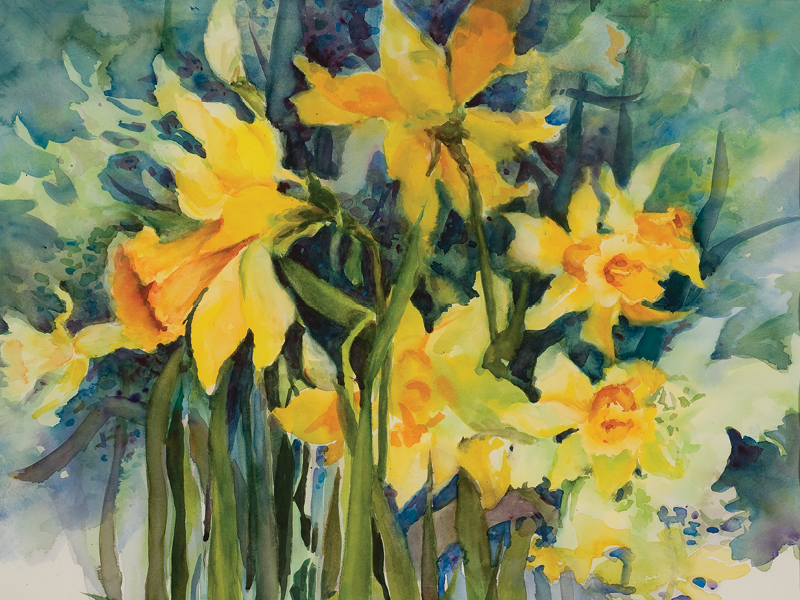By Tom Geddie
The common daffodil — also known to some as the narcissus and to others as the jonquil — is one of the first harbingers of spring, blooming yellow and, up close, sharing a near-intoxicating scent that broadcasts both its narcotic and medicinal potentials.
The blooms begin so early, in fact, that they disturb the winter drabness sometime in the middle of February.
The blooms come like clockwork at Mrs. Lee’s Daffodil Garden near Gladewater each year in February and last until sometime in March. Caretakers say there are millions of daffodils scattered through a four mile trail of more than 100 acres. The garden is open seven days a week from 9 a.m. to 4:30 p.m., weather permitting, through March or until the blooms fade.
Perhaps it was the William Wordsworth poem, “Daffodils,” that inspired Helen Lee to begin this project back in the 1950s. Here’s an excerpt:
Helen and her husband, T.W. Lee, went from near poverty to wealth during the East Texas oil boom and became prominent Gladewater residents. They bought land near town, and after W.T. died in 1954 Helen bought more and more land — eventually more than a thousand acres that became a sort of nature preserve with a five-acre lake, a three-acre pond, and assorted wildlife including deer, turkeys, and a variety of birds. She also bought a boxcar full of daffodil bulbs from Holland and, with the help of 40 or so workers, decorated the land.
Helen died in 1984, requesting that the garden be open to the public. As many as 6,000 people from as far away as Bolivia, Brazil, England, France, Ireland, New Zealand, and Scotland visit each year.
Daffodils are part of the Amaryllis family native to Europe, North Africa, and Asia, with new variations available from specialists almost every year. It’s best to leave them to their own business. They are tough, self-preserving plants with few — if any — natural enemies. Each variety contains the poison lycorine and florists who handle them without gloves sometimes get what’s called “daffodil itch,” involving dryness, fissures, scaling, and other problems.
The hardy plant is also a fundraising symbol for the American Cancer Society and other cancer-fighting groups, and in ancient times was sometimes used to rid the system of “whatever has collected in any part of the body.”
The name daffodil grew from an early name, affodell, although people only speculate when and where the d was added. The more formal name, narcissus, comes from Greek mythology. In one variation of the myth, a young man named Narcissus, obsessed with his own beauty, gazed so long at his reflection in a pool of water that he fell in and drowned. Where he died, the first narcissus plant grew.
To the Greeks, a symbol of vanity, in China it’s traditionally a symbol of wealth and good fortune.
Today, the flowers are common in ditches and other areas in the Upper East Side of Texas, although nowhere is the concentration greater than at Mrs. Lee’s Daffodil Garden, with its four-mile viewing trail around the lake and the pond and between wooded valleys.
The garden is open to the public from 10 a.m.-4 p.m. at 21600 County Road 3103 off Highway 271 about seven miles north of I-20. For more information, call (903) 845-5780 or go HERE (search Mrs. Lee’s Daffodil Garden) to find exact opening and closing dates that are dependent on weather and other factors.


